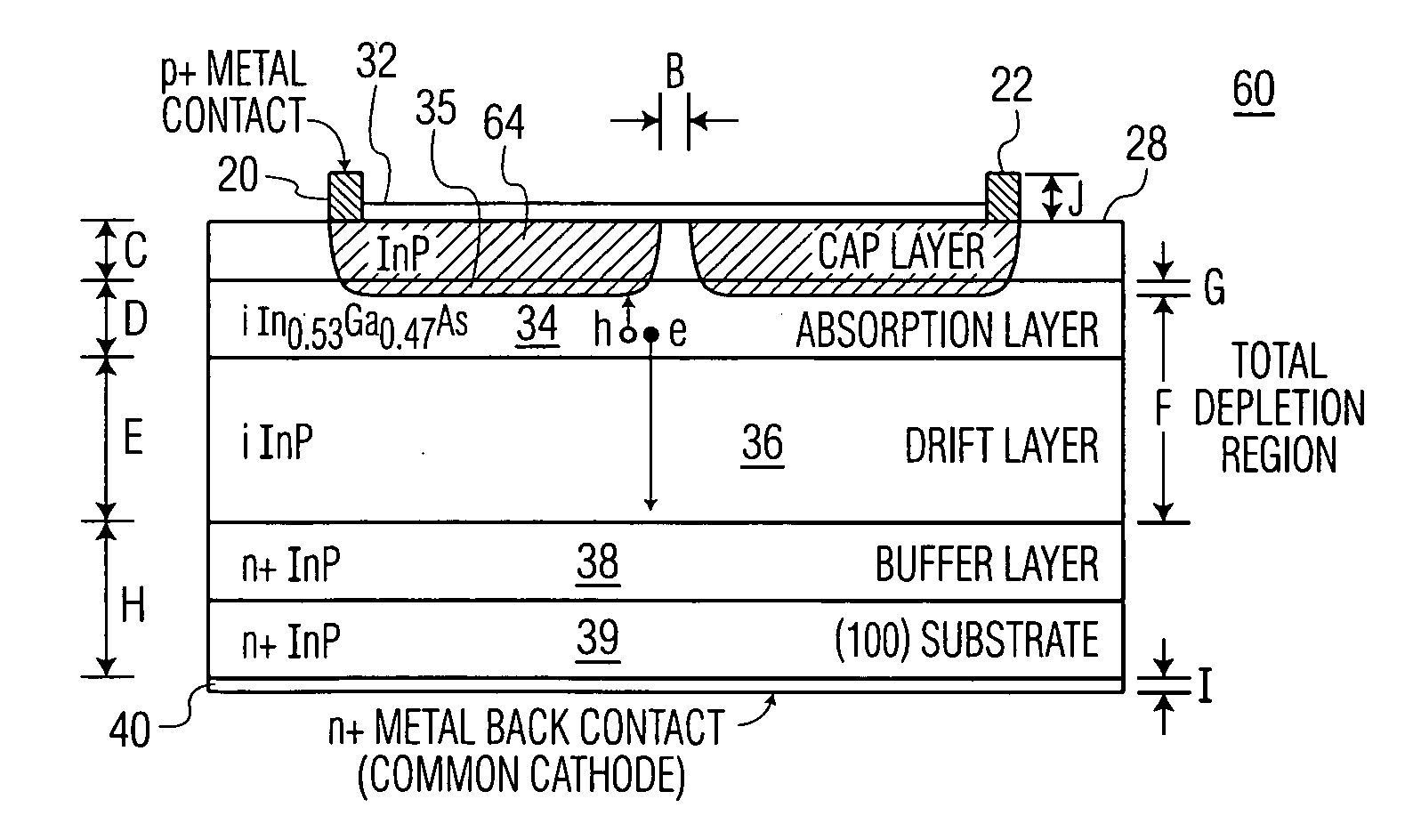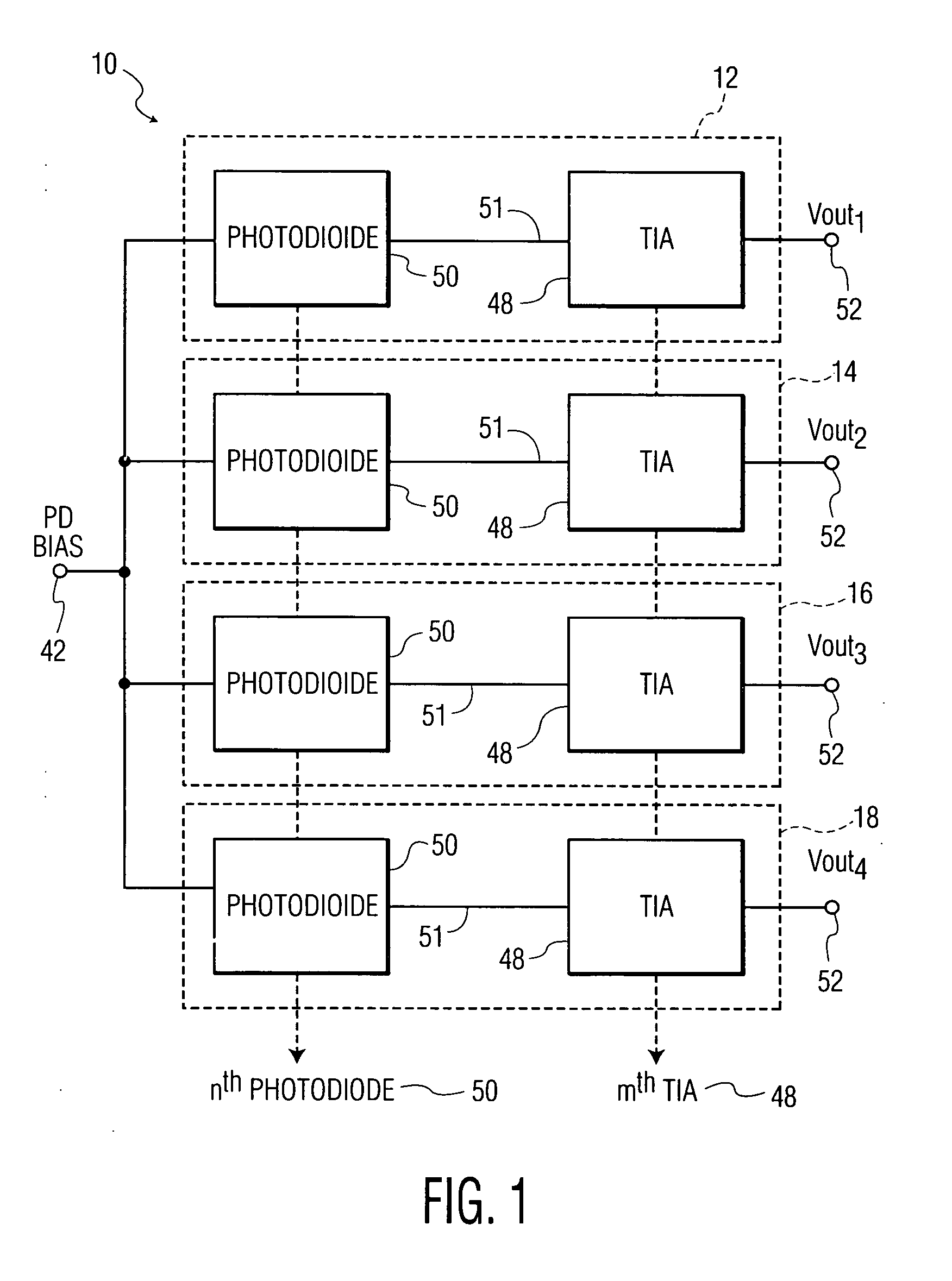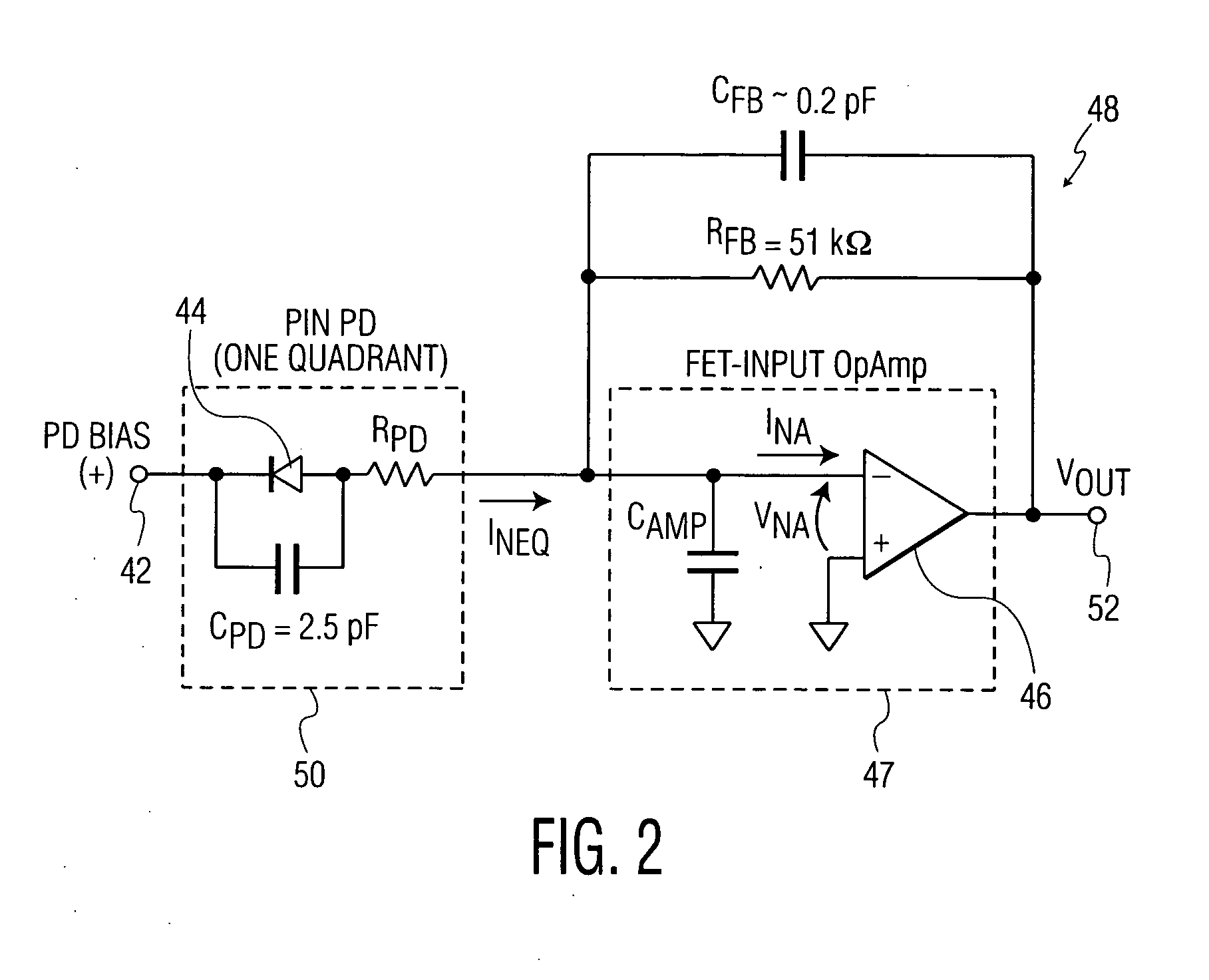Low-noise large-area photoreceivers with low capacitance photodiodes
a photodiode and large-area technology, applied in the field of semiconductor devices, can solve the problems of reducing the bandwidth of the photodiode, limiting the sensitivity of the overall system, and adding to the equivalent input current nois
- Summary
- Abstract
- Description
- Claims
- Application Information
AI Technical Summary
Benefits of technology
Problems solved by technology
Method used
Image
Examples
Embodiment Construction
[0026]The present invention is directed to a quad photoreceiver based on low-capacitance quad photodiodes each followed by a transimpedance amplifier. In one embodiment of the present invention, there is provided a 1-mm-diameter InGaAs quad photodiode having 2.5-pF capacitance per quadrant. In conjunction with low-noise field effect transistor (FET)-input operational amplifiers, the associated low-capacitance quad photodiodes are each designed to provide a quad photoreceiver having an equivalent input current noise density of less than 3.2 pA / √Hz per quadrant up to a 3-dB bandwidth of ˜20 MHz. This constitutes up to ˜17-dB improvement in sensitivity over a quad photodiode having 20-pF capacitance per quadrant.
[0027]Referring to FIG. 1, a schematic block diagram of a quad photoreceiver 10 is shown for one embodiment of the present invention. The quad photoreceiver 10 includes four quadrants or sections 12, 14, 16, and 18 each having a photodiode 50 followed by a transimpedance amplif...
PUM
 Login to View More
Login to View More Abstract
Description
Claims
Application Information
 Login to View More
Login to View More - R&D
- Intellectual Property
- Life Sciences
- Materials
- Tech Scout
- Unparalleled Data Quality
- Higher Quality Content
- 60% Fewer Hallucinations
Browse by: Latest US Patents, China's latest patents, Technical Efficacy Thesaurus, Application Domain, Technology Topic, Popular Technical Reports.
© 2025 PatSnap. All rights reserved.Legal|Privacy policy|Modern Slavery Act Transparency Statement|Sitemap|About US| Contact US: help@patsnap.com



